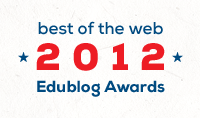Empty Outline
An Empty Outline is best used
when a great deal of structured content must be presented, such as in a
lecture. Varying levels of ability in students allows an empty outline to
meet the different needs. An empty outline can help students develop
skills of listening, note taking, and organization. All of these skills
do require clear and supportive feedback at the same time.
Beginning with a detailed
outline lecture or discussion, decide whether students should pay more
attention to its topics, subtopics, or supporting details (this might alternate
with certain subject matter). Then, prepare a partial outline, omitting
the topics, subtopics, or supporting details from it.
After the lecture, ask
students to fill in the blanks in the partial outline. Completing the
outline demonstrates students’ mastery of the material and shows students how
topics, subtopics, or supporting details relate to one other. An empty
outline is also a valuable resource in teaching students how to organize notes
when outlines are not provided.
It is important to be
cautious when choosing what to omit. It is recommended that an empty
outline be limited to at most, half of the lecture or discussion. The
same outline technique could also be incorporated into a “Book Look” activity
when assigning students reading from a text.





